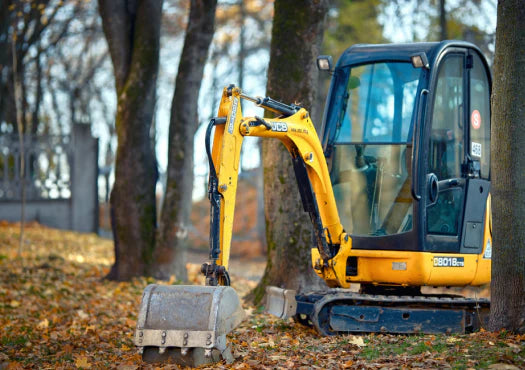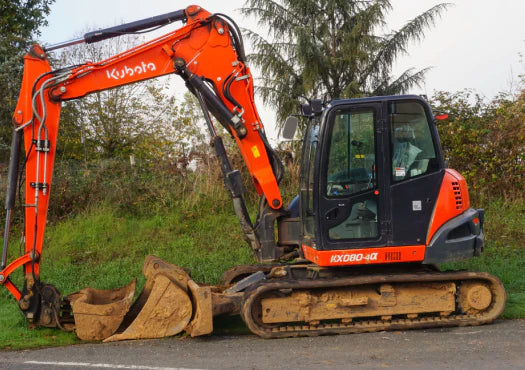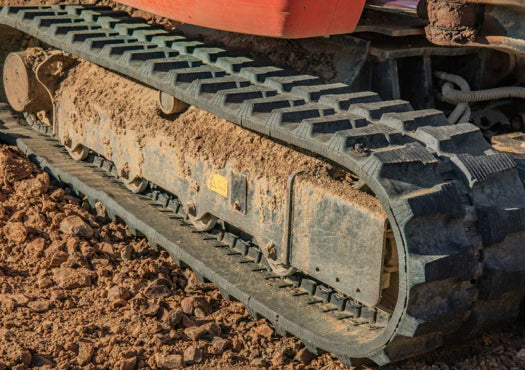Choosing the right rubber track tread pattern is critical to the success of your job. If you pick the wrong tread pattern, it can slow down production and delay projects. You could also damage the site, resulting in repairs and dissatisfied clients, and cause unnecessary wear, leading to early replacement of your rubber tracks.
However, with a variety of rubber track tread patterns available for all heavy equipment, including skid steers, compact track loaders, backhoes, excavators, and more, it can be difficult to determine which one makes the most sense.
Where the Rubber Meets the Road
In addition to finding the applicable tread pattern for your job, the quality of the rubber track also makes a big difference in its performance. Look for rubber tracks that are made from specially formulated rubber compounds and feature all-steel links and drop-forged steel inserts that are dipped in a bonding adhesive. These characteristics will enhance the rubber tracks’ durability and ensure smoother operation.
Common Tread Patterns
1. Staggered Block Tread Pattern
The staggered block tread, which features very large pads in a staggered pattern, is the most popular and commonly used tread pattern type. It is the standard option for compact track loaders direct from the factory for brands such as Bobcat, Case, Gehl, John Deere, Kubota, Mustang, New Holland, Takeuchi, and Volvo.
While this tread design is perhaps the most all-purpose pattern available, it works best during frequent turns on hot, paved surfaces. It is particularly well-suited for use on hard and abrasive surfaces, such as paved highways and gravel. Equipment owners can expect staggered block treads to:
• Operate smoothly on hard surfaces
• Cause minimal ground disruption to finished lawns
• Be generally acceptable for use on sand, clay, dirt, mud, gravel, and asphalt
2. C-Lug Tread Pattern
For equipment operators that need to navigate both on- and off-road surfaces, the C-lug tread offers the most flexibility across multiple terrains. The C-lug pattern looks similar to the staggered block tread, except that it has notches cut out of each block to create a sideways “C” shape.
Its high number of cutting edges provides increased traction and superior handling to improve the performance of the rubber track. Because of this, the C-lug tread pattern is:
• Extremely durable
• Designed to operate smoothly over a variety of surfaces
• Appropriate for clay, mud, asphalt, concrete, gravel, and sand
3. Straight Bar Tread Pattern
If you frequently operate your heavy equipment on wet or muddy ground conditions, the straight bar tread is the best pattern for you. It’s designed to maximize traction and reduce the risk of getting stuck in challenging terrains.
The straight bar tread is the least likely to tear up finished turf thanks to its lower durometer rating, which measures the hardness of a material, such as rubber. The lower the rating, the softer or more pliable the material is. This allows you to pivot, as well as operate, at low or high speeds without scarring the underlying lawn. Be aware that the increased traction can result in a rougher ride than either staggered block or C-lug treads. To summarize, the straight bar tread:
• Works well on wet or muddy terrain
• Minimizes damage to finished grounds
• May produce a more uneven ride
4. Zigzag Tread Pattern
When equipment operators must move between hard and loose surfaces throughout a particular job, they should select the zigzag tread pattern. This tread is able to switch quickly between the smooth ride that operators desire on paved surfaces and the increased traction they need for loose ground cover.
The zigzag tread pattern handles more evenly across terrain types compared to the straight bar design. As a bonus, the zigzag tread works great in the snow, extending the capabilities and seasonality of your heavy equipment. In short, the zigzag tread pattern:
• Works between hard and loose ground
• Provides a more even ride across terrains
• Efficiently handles snowy conditions
By understanding these common tread patterns and their best use cases, you can select the right rubber tracks for your equipment, ensuring efficiency and durability on the job site.




